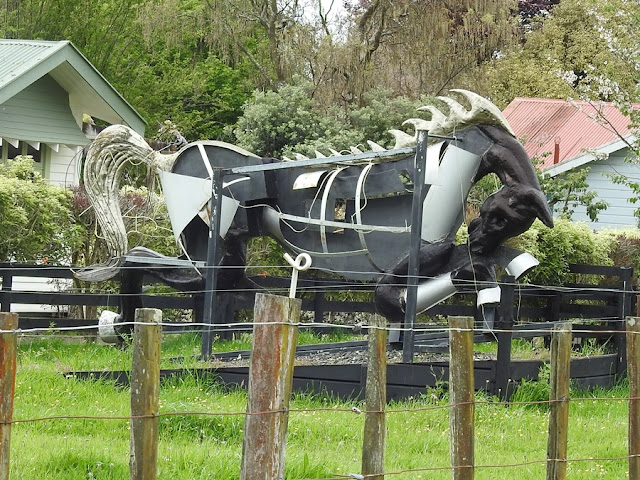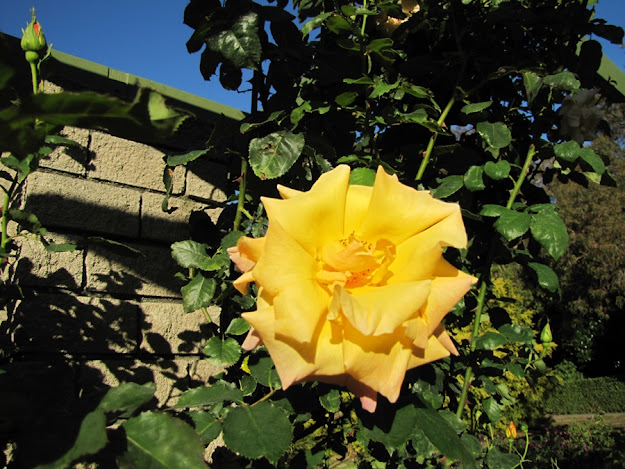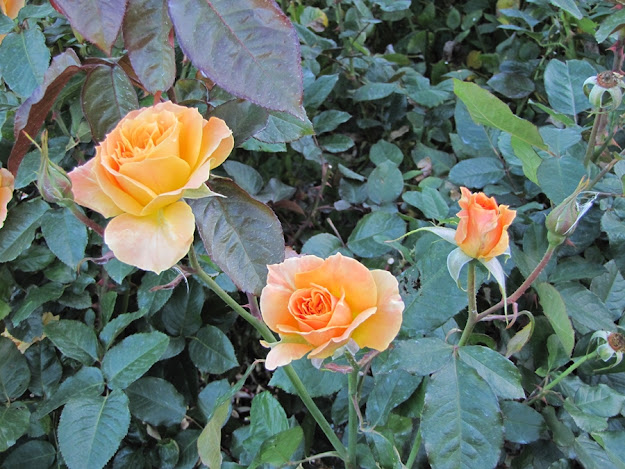the ramblings of a woman who was transported from her comfort zone in the US Midwest to a different country and culture that shouldn't be so different, but is.
12/30/2020
Horses
12/17/2020
Is New Zealand too clean?
One of the first thing you will notice when you visit New Zealand is how clean it is. There is rarely any trash seen on the side of the road and the grass along the roads is usually cut and neatly trimmed.
Today I drove into Stratford to give blood. A couple of kilometers outside of town, there was a fire engine blocking the road and we were waved down a side road as a detour. I mentioned it to the nurse preparing my arm and she said, 'Yeah, we heard the fire trucks and figured it was a pretty bad accident.' It seems she was right and it was a pretty serious crash with three people taken to the hospital, one being taken by helicopter to New Plymouth.
On my way home about an hour or so later, there was absolutely no indication that an accident had even happened.
Most of the time, I appreciate the fact that the roads are kept clean but sometimes I think they should wait a day or two to clean up debris and marks left by car accidents, just as a reminder.
12/12/2020
Matiere II
These photos from my archives are from the other end of the same road
It was the turn-around stop on a rail car tour we were on in 2017.
11/22/2020
Matiere
Today, Matiere is ghost town, though still with a primary school, now in its 105th year with a 2011 roll of 19. https://www.nzherald.co.nz/property/news/article.cfm?c_id=8&objectid=10732185
11/01/2020
Yarn Bomb
10/21/2020
A sign of the times
"Please do not take photos or video our staff and other patients while you are in the Emergency Department. You need consent from our staff to take photos or video a procedure during your stay here.
"Thank you for your co-operation
Management"
9/22/2020
Te Henui Vicarage
9/08/2020
Things I wondered about but didn't know who to ask
My step-daughter, Missy, started working on a dairy farm in the South Island a short while ago and loves it! She recently put a lot of her new knowledge about cows and farms down on (virtual) paper and shared some with me. I'm so glad she did, as I've had lots of questions and now I have some answers!
She gave me permission to share it with you on my blog. I hope you enjoy it as much as I did.
--------------------------------------------------------------
Missy's Guide to Tags, Spray Paint and Cow Behaviour
Disclaimer: Every dairy farm is different as is every cow, so some of the information within may not be relevant to your farm/cows. For all I know, North Island cows may have a completely different dialect to South island cows, and South Island cows may have an accent similar to a southern twang...
Moos and other behaviours to note:
BRAYING LIKE A DONKEY MOOS
This is medium to long distance calling. They don’t have cellphones, so they make do. This is particularly common with new mothers who have been separated from their calves within the last few days. It can also happen if two herds of cows are closeish to each other distance wise, as cows may have friends in different herds.
LONG, HIGH PITCHED, AND LOUD MOOS
Distress call sometimes, attention seeking other times. If you hear more than one of these it is usually worth investigating.
SHORT AND SOFT MOOS
Basically a hello of sorts. If they are doing this while looking at you then they usually want attention. An introductory hand to sniff might be a good response. The leaves off a vege plant would also be much favoured, especially of it is broccoli or another brassica like kale. Can also be a conversational moo, just generally trying to talk to you.
SHORT, LOUD MOOS FROM A SINGLE COW
From what I can tell, this is usually a complaint, grievance, or general ‘You cant tell me what to do’, ‘How dare you’, or ‘Make me!’ However I swear there are cows in our herds who use it to say ‘Look at me!’ or ‘Pay me Attention!’
ALL THE COWS STARING AT YOU AND MOOING CONTINUOUSLY
Either you have a puppy or something equally interesting with you that they are trying to interact with, or they are complaining to the nearest human they can find. Their complaints are usually about it being past time for milking or about the lack of grass in their paddock. The louder the moos, the more dissatisfied they are in general.
BUNTING PEOPLE
Unless they come running at you with their head down (in which case, get out of there!) Cows will generally be playful when bunting a person. With people they know well, they tend to wander up slowly, sniff the persons hand, and then proceed to rub or bunt against the person. This is them begging for a scratch. Behind the lump on top of their heads is a good place, as is the top of their hips and their sides above the ribs if they will let you. If you really gain their trust, they may let you scratch the side of their neck and under their lower jaw too. Both of these places are out of their line of sight so it is a good sign of their trust in you if you can touch them there. Be careful though, they can be quite stubborn if they get addicted to scritches and will not go away (sort of like seagulls if you feed them) and it may also annoy the farmer if they start demanding attention from him when he is trying to get them to go into the yards or milking shed etc.
BUNTING OTHER COWS
Cows have a hierarchy within the herd, in which every cow should know its place. If one cow steps out of line, another more highly ranked cow will try to put them in their place by bunting them. Even if you did break up their little tiff, they would return to it as soon as you turned your back. The hierarchy determines who goes into the milking shed when, who gets first go at the fresh grass on offer, and who makes friends with who in the herd. Two-year-olds (heifers) are at the bottom of the pecking order until they figure things out, so older cows tend to pick on them which is where you will see most of the bunting happening. Basically they are teaching respect for ones elders.
MOUNTING OTHER COWS/BEING MOUNTED BY OTHER COWS
They are in heat and feeling frisky. Not much else to say about that one other than if you see cows with the fur rubbed off their rump and hips, they are not sick, it is from repeated mounting and you know they have been in heat recently.
DANCING, BUCKING, AND KICKING LIKE A NINJA
This is a happy (and probably freshly milked!) cow. They tend to play around as a show of joy, particularly if they have just been given new fresh grass to enjoy after returning from the milking shed. They won’t tend to do this when their udders are full, it would be like us human female bouncing on a trampoline without a bra on – quite painful. Sometimes they may dance or skitter around when you move on the other side of the fence, this is just them trying to figure you out.
THE STARE-DOWN
If a cow is just standing there staring at you with their head low and not blinking, congratulations, you have their attention. However they are not sure what to make of you. Talking softly and move slowly. Holding out a hand for them to sniff may make you a new friend.
SITTING DOWN WITH THEIR HEAD ON THE GROUND
Call the farmer. Cows sleep with their heads held up or tucked into their sides. They do not sleep with their heads on the ground so to find them in this position is not a good thing, and if they can’t hold up their head usually they cannot get up at all. If they are like this then they may be suffering from Milk Fever, which is usually cured by intravenous drips that contains a very dilute solution of Magnesium (one given directly into a vein on the side of their neck, and one administered just under the skin on their ribcage if you were curious). You will want to tell the farmer what the cows ID number (yellow tags) is, and where she is (use landmarks, eg the paddock beside the house, under the big tree etc.) so that he can send someone to her. This situation is often referred to as a ‘Down Cow’ and if they are ‘down’ for too long their body weight will damage their legs or crush their internal organs – it can kill them.
As a side note, if you see a cow staggering badly (crossing their legs as they walk and going from side to side dramatically for example) or struggling to stand up after multiple failed attempts, call the farmer then too. These are early warning signs a cow is about to go down because of Grass Staggers. They may not attend immediately as it is not possible to treat them until they actually go ‘down’, but they will keep an eye out to make sure the cow doesn’t get worse.
Spray-painted markings on the udder, legs, rump, and base of the tail:
RED
Usually means the cow is undergoing treatment for something. If there is a red plus sign on their upper rump with one or more dots, they are probably being treated for mastitis (bacteria in the milk causing it to come out lumpy and the cows udder to be inflamed). This is the most common ailment for cows in a red herd. The plus sign and dots are showing which of the four quarters of her udder are infected/in need to treatment (top left = front left quarter etc.). Any cow that is undergoing treatment using drugs that make her milk unsuitable will often have red paint across the udder and up the legs. This tells milkers not to send her milk to the vat with the rest.
BLUE
Usually in the July-October period this means the cow has calved in the last 3 days and is producing colostrum milk, a far richer and creamier milk intended for calves as it contains important antibodies and other goodies that help protect the calves in the future. The equivalent of human breast milk I suppose. The orientation and shape of the markings often differs for each day of the week eg. Circle on the udder means the cow calved on a Sunday on my farm. Each farmer has their own style/code.
GREEN
A Farmer’s favourite type of marking. These cows are milkers in good health whose milk can go into the vat and earn money without fear of getting into trouble with Fonterra/Open Country/Oceania/Synlait etc. The green does wear off over time, but is seen on cows that have been newly reintroduced to a milking herd after illness or calving.
LETTERS ON THE RUMP AND UDDER
If you see an ‘L’ on a cows rump, usually in blue, they are not colostrum, they are probably lame or having difficulty walking long distances. The damaged leg may be painted too, These cows are usually in with the red herd, but can be in colostrum or normal milking herds too. On our farm, we mark cows who need assistance with calving with a ‘C’ on their rump but I don’t know if that is universal. Also on our farm, a ‘C’ on the udder above a teat means check. That cow may have shown early signs of mastitis and needs her milk from that teat to be checked again at the next milking.
RANDOM DOTS OF COLOUR
These are usually on the rump of the animal and used for drafting animals into separate herds. For example, when the cows are in calf, we watch for signs that they are starting to ‘bag up’ (produce milk/fill their udders) This means they will calve soon (2-3 days) so we mark them with a dot and separate them from the ones not showing signs. We then move them into a paddock where we can keep a closer eye on them/bring them to the shed for a check every day.
NO MARKINGS
Cows with no real makings on their rump or udder could be one of two things, Dry cows or milkers who have been in milk for a while. Dry cows are almost always in calf, at this time of year (September) they look fit to burst. Milkers who have been in milk for a while tend to lose the green paint on their rump and udder as it wears off and is not refreshed unless they need to change colour/designated herd.
PAINT ON THE BASE OF THE TAIL
This is usually used to mark when the cow is expected to be in heat for the purposes of administering AI (artificial insemination). AI is expensive, and you pay by the straw (dose) as well as paying the technicians to administer it, so you have to time it right in order to make it cost effective, and sorting cows into groups with different tail paint colours is part of that process. Any cows that don’t get pregnant within a few rounds of AI are usually put to a bull, and if they still don’t get pregnant it is usually an indicator of hidden health issues and therefore the end of the line for them (unless the farmer decides to let them have another chance next year. These are referred to as ‘Holdovers’).
The Different Ear Tags:
YELLOW TRIANGLES WITH NUMBERS
These are on-farm identification numbers or ‘big girl tags’, which is what the farmer knows the cow by – essentially it is their name eg. 1413, 702, 901, & 1670 are all my friends on farm. Often tags on more established farms will have the name of the farm on them too.
SMALLER COLOURED TRIANGLES WITH NUMBERS
These can be used to mark hefier calves. They usually stay with the calf all their life, even when they get their ‘big girl tags’. These tags tell the farmer what number heifer calf that cow was, showing the order in which the cows were born. Eg. The first heifer calf of the year will be labelled with the number 1, calves born later will have larger numbers.
LITTLE WHITE CIRCULAR TAGS
These are NAIT tags (National Animal Identification and Tracing). Both boys and girls get them unless they are going on the bobby truck. All calves that are reared beyond weaning get a NAIT tag. They are a life long identification number that catalogues the cow in the Ministry of Primary Industry’s national database for deer, dairy and beef stock. It is all about being able to trace where that animal has been and what other animals it may have been in contact with in the past.
BRASS TAGS
These are another form of on-farm identification, these are not used by all farmers but are strips of copper that sort of staple into the ear with the cow’s on-farm identity number (name) on them. That way if they lose their yellow tags the farmer can easily tell who the cow is and get some new ones sorted.
FOLD-OVER CLIP TAGS
These are white and are used on calves that will not be reared. They are destined for the bobby truck. You won’t see many of these unless it is on calves awaiting a roadside pick-up.
9/07/2020
Mangaweka
8/19/2020
pukeatua memorial church
The beautiful little place of worship was established in 1955, built by the small farming community of Pukeatua as a memorial and lasting reminder of those local young men who gave their lives in the two World Wars.
At the time the Pukeatua Church was built the district had no church and Sunday services were held in the local hall. The idea for a church for all denominations was first mooted in 1946 and was taken up with enthusiasm, with 500 pledged towards the building at the first meeting. Edited excerpts from the book 'Waipa Home of Champions: Celebrating 150 Years'. Written and produced by historians Richard Stowers and Kingsley Field.
8/09/2020
Barque Lizzie Bell shipwreck
The Lizzie Bell wrecked near the Oeo Stream in 1901. The good folk of Pihama, the closest town, helped rescue and care for the survivors.
7/25/2020
clydesdale war memorial hall
7/20/2020
taramakau road-rail bridge
7/07/2020
Meshblocks
More times than not, I usually get curious about the town or area name and I go hunting on the internet to see what I can find. When I used google, I didn't get much information most of the time and was left very unhappy.
A meshblock is both a geographic unit and a classification. It is the smallest geographic unit for which statistical data is reported by Stats NZ. A meshblock is a defined geographic area, varying in size from part of a city block to large areas of rural land. Meshblocks are contiguous: each meshblock borders on another to form a network covering all of New Zealand, including coasts and inlets.http://archive.stats.govt.nz/methods/classifications-and-standards/classification-related-stats-standards/meshblock/definition.aspx#gsc.tab=0
6/21/2020
Dugald MacKenzie Rose Gardens
Opened in 1968, the garden has three sections: the formal rose beds, the trial grounds and the plant variety rights collection. The garden contains over 5000 roses in named beds. The garden was named after Dugald MacKenzie the Superintendent of Parks and Reserves from 1946 to 1966. He contributed significantly to the gardens development.
The garden is also home of the New Zealand Rose Society International Rose Trial Grounds.
























































